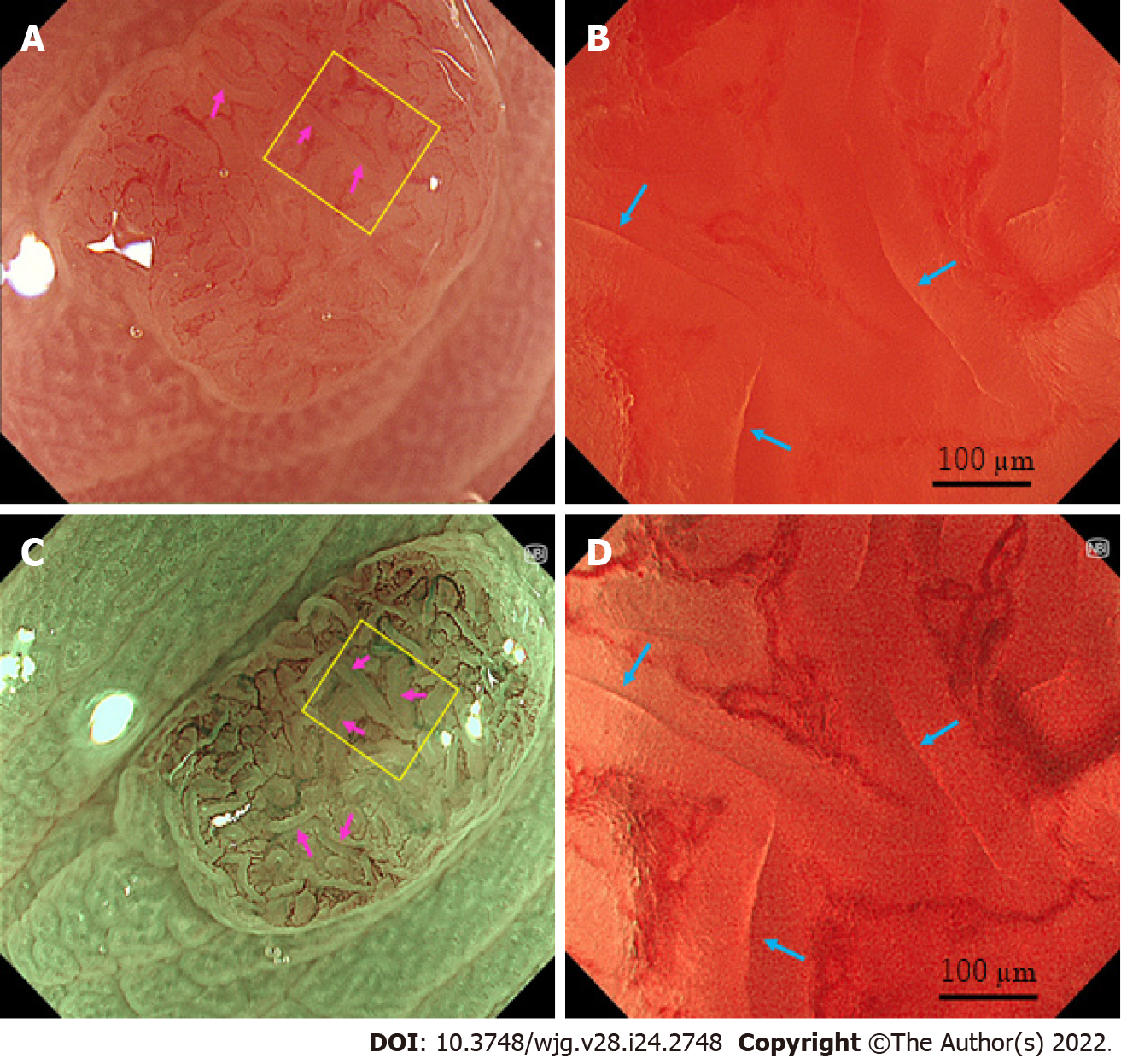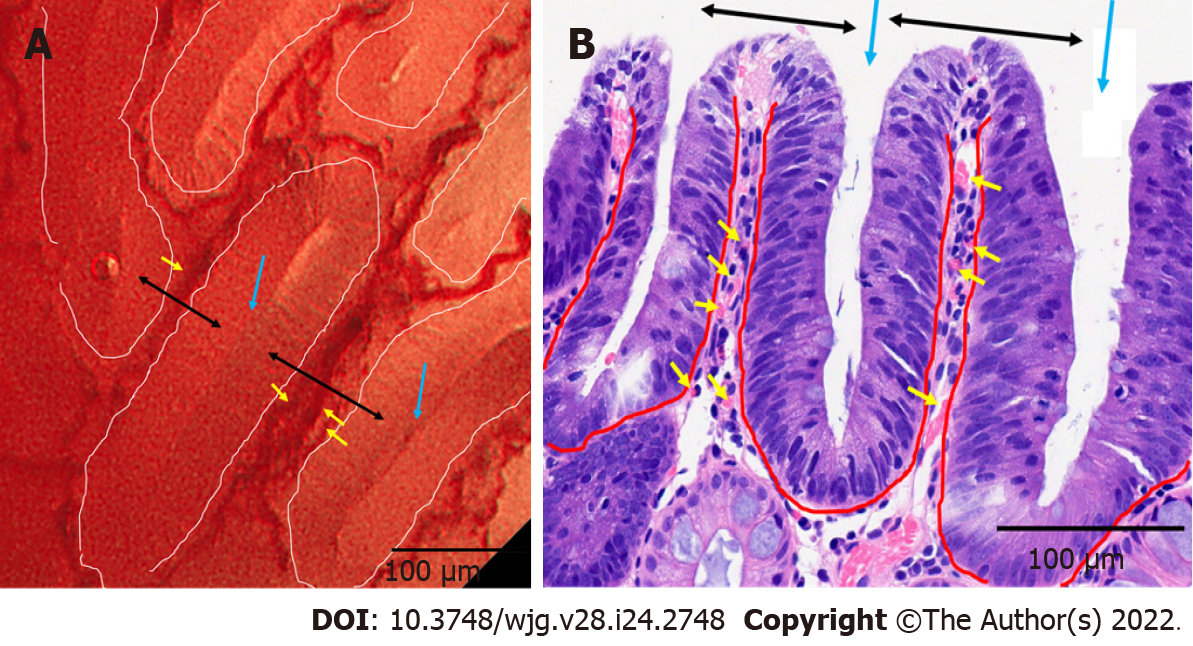Copyright
©The Author(s) 2022.
World J Gastroenterol. Jun 28, 2022; 28(24): 2748-2757
Published online Jun 28, 2022. doi: 10.3748/wjg.v28.i24.2748
Published online Jun 28, 2022. doi: 10.3748/wjg.v28.i24.2748
Figure 1 Representative images of “brown slits” in a low-grade tubular adenoma using conventional magnifying endoscopy.
A set of a conventional magnifying endoscope (CF-HQ290Z), X1 system, and 4K 32-inch monitor was used. A, B: Full-zoom (95 ×) magnification, narrow band imaging. Brown slits were observed inside and along the tubular glands surrounded by the microvessels; C: Full-zoom magnifying, white-light imaging observation without indigo carmine spraying showed faint and pale red slits inside and along the tubular glands; D: Full-zoom magnifying, white light imaging with indigo carmine spraying showed indigo carmine accumulated in the site corresponding to the brown slits.
Figure 2 Representative images of “slit-like lumens” and “brown slits” in a low-grade tubular adenoma using endocytoscopy.
A set of an endocytoscope (CF-H290EC), X1 system, and 4K 32-inch monitor was used. A, B: White light imaging observation; C, D: Narrow band imaging observation; A, C: Conventional (100 ×) magnifying observation. The yellow box represents the site for full-zoom observation; B, D: Full-zoom (790 ×) magnifying observation; D: Slit-like lumens were observed (blue arrows). The microvessels were clearly observed surrounding the slit-like lumen and showed a vessel network; C: A “brown slit” sign was observed (pink arrows); B: Slit-like lumens were obscurely observed (blue arrows).
Figure 3 Correspondence between endocytoscopy and histology in a low-grade tubular adenoma.
A: A set of an endocytoscope (CF-H290EC), X1 system, and 4K 32-inch monitor was used. Full-zoom magnifying, narrow band imaging observation. Variably shaped tubular glands (surrounded by white curves) with homogeneous widths of about 100 µm. The crypts (blue arrows) are detected as brown and white slits inside and along the tubular glands. The microvessels (yellow arrows) are identified in the intervening part (black arrows); B: Vertical sections stained with hematoxylin-eosin. The tubular glands (surrounded by red curves), crypts (blue arrows), intervening parts (black arrows), and microvessels (yellow arrows) are seen in endocytoscopy.
- Citation: Toyoshima O, Nishizawa T, Yoshida S, Watanabe H, Odawara N, Sakitani K, Arano T, Takiyama H, Kobayashi H, Kogure H, Fujishiro M. Brown slits for colorectal adenoma crypts on conventional magnifying endoscopy with narrow band imaging using the X1 system. World J Gastroenterol 2022; 28(24): 2748-2757
- URL: https://www.wjgnet.com/1007-9327/full/v28/i24/2748.htm
- DOI: https://dx.doi.org/10.3748/wjg.v28.i24.2748











